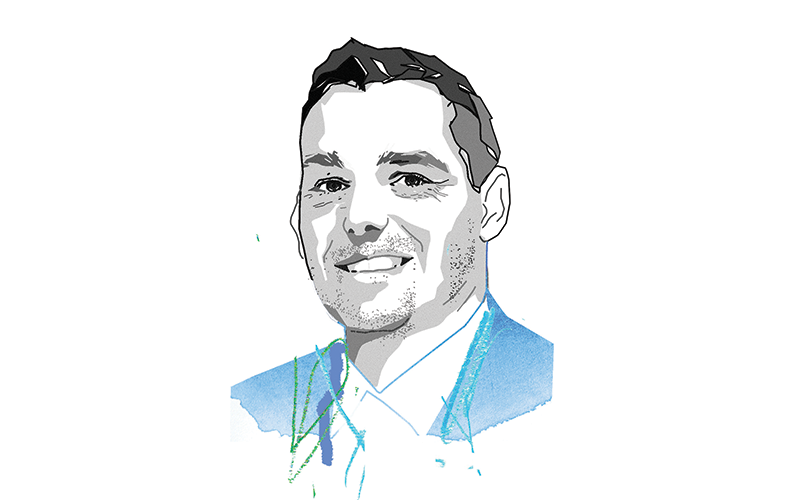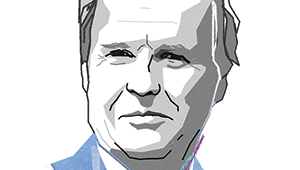
Those looking for opportunity should go east, not west. Nowadays, Barking & Dagenham is one of London’s biggest growth opportunities. Government-inflicted financial crises aside, house prices here have risen more than in any other part of London over the past decade.
Some say we are a bit of the North in the South. We have one of the highest rates of unemployment in the country. Many of our children rely on free school meals. One in four of our residents are in debt, and we remain one of the fastest-changing communities in Britain.
Our strength has always been our proud, working-class roots. We have supplied the workers that keep London running for decades. Despite the challenges thrown at us over the years – from the Luftwaffe in the Second World War to the BNP at the turn of the century, wildfires, floods and even a tornado triggered by climate change, and now a cost-of-living crisis – we punch above our weight.
It is this ambition that we bring to our place-shaping. We call it inclusive growth. It is not just about bricks and mortar. Hearts and minds build a community, and aspirational families are at the heart of everything we do. We see our job as helping them thrive as well as putting a roof over their head.
Going back, William the Conqueror, Captain Cook and Mary Wollstonecraft were former tenants. But our present-day story started 100 years ago with the Becontree estate.
Built by London County Council, the Becontree was born from the loins of Addison’s Housing Act of 1919. Providing homes for heroes after the Great War, it was a slum clearance overflow by any other name. Unfortunately, it also marked the end of the rolling fields and old manor houses like Gascoyne and Fanshawe. By the time the last brick was laid on the 26,000th home, the Becontree was the largest council estate in the world.
Two things happened in 1931. The Empire State Building opened in New York and Henry Ford opened his car plant in Dagenham.
By the 1950s, we bore an uncanny resemblance to ‘kitchen-sink Britain’. People did not work at t-mill, but for too many people life was all too predictable. A dominant assembly-line employer, regular shift patterns, a ready source of labour and a council house for life were all within walking distance. By now, a second generation were putting down roots – it wasn’t just cars being made in Dagenham.
But the cracks were beginning to show by the 1970s. Britain’s balance of trade deficit had tipped decidedly from exports into imports. The post-war consensus around full employment stood at the creaky gate. Before us gaped an era of short-term, flexible, service-based jobs. On 20 February 2002, the last car rolled off the assembly line. Today, fewer than 3,000 jobs occupy a place once taken up by 50,000.
The final straw was not a rusty old bumper but the Right to Buy scheme. Good for the individual, not so good for the community. One gains an asset, the other loses one – and once sold, forever lost. Thanks to this, a once stable (if paternalistic) community is today part of a burgeoning (and decidedly non-paternalistic) buy-to-let market. The council spends as much time policing anti-social behaviour and clearing up after neighbour disputes and fly-tippers as it does collecting the bins.
By the end of the 20th century, the decline in social respect and anger at loss of national identity was bound to land badly. When it did, it was the guttural cry of Brexit that gave millions a voice and made clear their desire for greater control and self-determination. There are no easy answers, but the need to combine economic and social fairness in a space different communities call home is not far off.
‘It is this ambition that we bring to our place-shaping. We call it inclusive growth’
Two decades before ‘left behind’ entered our common tongue, we had our own Brexit moment. Anger at dwindling access to limited public services – including GPs, schools, and the once-stable
supply of council housing – saw 12 BNP councillors elected on the council. People queued around the block to vote for them in the local elections of 2006, even where they had not fielded a candidate. Had they stood more, they would have secured and won control of the council by a country mile.
Their defeat four years later was not just the cumulation of a huge re-engagement exercise, it was also a mandate for change. But by now, cuts to local authority budgets were raining down from a government intent on austerity.
Fast forward 2014, and I became leader of the council. We faced a simple choice. Hope for the best and lose 1,000 jobs, or be ambitious and use our levers to influence growth on our terms. We decided we wanted to intervene in the local economy, invest in much-needed affordable housing and deliver 50,000 homes over 20 years.
A wholly owned regeneration company, Be First, and an ambitious investment strategy lay at the heart of our plans. The council took advantage of ultra-low interest rates from the Public Works Loan Board to borrow more than £750m to fund a new-build programme. Grant support from the GLA is a crucial part of this funding model, without which we would not be able to deliver homes at the lowest, council-equivalent rent.
More than three-quarters of the new homes we are building are available at sub-market prices, with a range of types and tenures that meet local housing need.
Second, our focus is on holding council-owned land, building it out and retaining new homes – in contrast to selling land to developers or newly built homes for short-term capital gain. This not only gives us control over the planning process, it means we minimise the financial leakage that bedevils traditional planning approaches.
We don’t lose money in fees or profit going west from land acquisition, planning, construction, sales or rental negotiations. Most new affordable homes being built are held by Reside, another wholly owned council housing company.
Our long-term goal – government and Bank of England permitting – is to realise the value of newly built housing, from the growth of its asset price to the rental income it generates.
Third, Be First has enabled us to drive regeneration at scale and pace. By providing the planning service on behalf of the council, our planning and regeneration aspirations work in tandem.
Be First brings substantial development expertise, harnessing private sector experience to advance public service interests. This includes commercial and property acumen, acquiring new housing sites – in some cases, homes built by other developers, where there is a strong investment case.
With more than 100 staff, Be First brings serious horsepower, enabling the council to progress multiple large development schemes at the same time as generating over £10m annually to support vital council services.
The message to developers is clear, or as I like to say, ‘Dagenham direct, Dagenham simple’. If you want to build good-quality homes for local people, rock on. If you are only in the market for the rich or to make a quick buck, sling your hook.
But don’t take my word for it.
‘Only 20 years ago, ‘Barcelona on Thames’ was just a pipedream, made up of a few rows of housing. Today, we are well on the way to building London’s first new healthy town, the size of York’
In the past few years, together we have built over 2,000 homes at truly affordable rents, taking 900 local families off the housing list. Today, once again, we are the biggest council housebuilder in London, responsible for one in five new council homes being built.
The old May & Baker site in Dagenham East was a quintessential symbol of an industrial past fading from memory. The land lay derelict. The only future on the table? Warehouse and factory work. But we stuck our neck out and said we wanted a film studio.
Many people did not take us seriously, and fewer still thought it would happen. But we stuck to our vision and built a coalition of support, crucially winning significant backing from leading industry figures. The explosion of content, driven by the likes of Netflix to Amazon and others, only helped.
But we didn’t just aspire to do it, we willed the means by investing £40m to purchase the land. This increased the attractiveness of the site for prospective partners, including MBS and Hackman Capital Partners, which bought it from us. Today it is called Eastbrook Studios.
We also have a burgeoning arts and culture sector, with local SMEs ready to take advantage of supply chain opportunities that spill over from a major new investor. We have been working with industry experts and local organisations to ensure we are ready to maximise the local benefits.
Work has been completed on a second studio, Welbeck Wharf in Barking. Together, the studios bring a £1m endowment, providing training opportunities and 2,000 jobs. All told, it is a £35m-a-year investment in the local economy.
Only 20 years ago, Barking Riverside (or ‘Barcelona on Thames’, as I like to call it) was just a pipedream, made up of a few rows of housing. Today, we are well on the way to building London’s first new healthy town, the size of York. The Thames Clipper boat service launched last year, and we opened a brand-new overground station ahead of schedule.
When Andy Haldane, former chief economist at the Bank of England, joined me on a tour of the borough, his eyes nearly popped out as we rounded Creekmouth. It was like he had never seen a brand-new train station in mint condition before. You have to be a Victorian to get it.
‘Barcelona on Thames’ has been joined by award-winning buildings in ‘Mini-Manhattan’ (Barking Town Centre) and the ‘Roding Riviera’.
We have also attracted a £1.5bn high-tech data centre, a world-class transport research faculty (UCL’s Pearl), secured London’s first Youth Zone and CU London, a modern university worth £4.5m investment in the borough. More than 5,000 students have enrolled and 1,500 graduated, of whom six out of 10 are local women.
Barking was once home to London’s fishing fleet. It is only right that the City of London is returning Billingsgate and London’s iconic markets to us. The relocation of Billingsgate, Smithfield and New Spitalfields is on the former Barking Power Station site. It represents a £775m investment, brings 3,500 jobs and a World Food School to train tomorrow’s Michelin star chefs.
In total, we have attracted more than £4bn of investment – equivalent to £1.3trn for the UK economy if the government invested that in every local authority in England and Wales. Not bad for a London borough with a small council tax base and one of the most deprived communities in the country.
What is remarkable is that we have done this against the backdrop of a decade of budget reductions, starting with austerity under David Cameron and George Osborne, a global pandemic, and now the biggest squeeze on public finances in living memory.




















